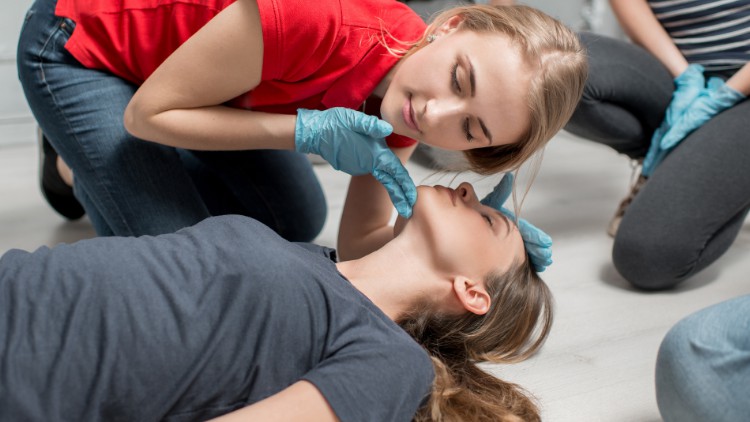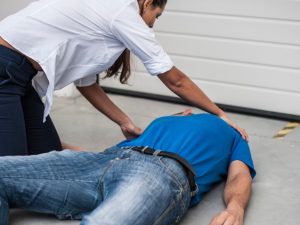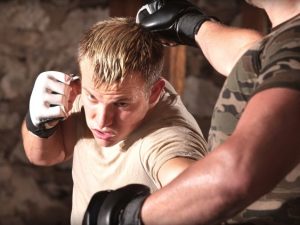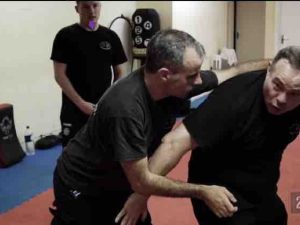Emergency Life Support | First Aid Training
- Description
- Curriculum
- FAQ
- Reviews

Do you want to know what to do in a emergency life threatening situation? This course will empower you with the skills to know how to treat various life threatening illness and injuries.
The course consists of videos that encourage you to practice the skills you are learning. There are numerous handouts you can download and keep for future reference as well as short tests to check your learning after various sections. We will keep you entertained and engaged throughout and will always be on hand to help answer any questions you have – just email [email protected] or use the Q&A section. The course is fully compatible with all computers and mobile devices. You will be able to stop and start as often as you like and on completion you will be able to print your Certificate.
It is impossible to cover all eventualities within this course, or to equip you with the knowledge and skills to appropriately diagnose and treat in unpredictable real life situations. If you suspect illness or injury, you should always seek immediate professional medical advice.
The Author has made every effort to ensure the accuracy of the information contained within the course, however this course is merely a guide and the Author does not accept any liability or responsibility for any inaccuracies or for any mistreatment or misdiagnosis of any person, however caused.
EMT First Aid and Lifeguard Training provides this course for guidance and it is not in any way a substitute for medical advice. EMT First Aid and Lifeguard Training is not responsible or liable for any diagnosis made, or actions taken based on this course. We strongly recommend that you attend a practical First Aid course to understand what to do in a medical emergency.
Please be aware that the information is correct at the time of filming June 2021 and relates only to UK Resuscitation and First Aid guidelines. If you are outside the UK please refer to your countries guidelines and governing board.
-
6Conducting a scene survey
In this video you will learn how to stay safe in an emergency by considering the safety of the scene.
We will talk about checking the area for dangers and understanding why we need to talk to the casualty.
-
7The Primary, Secondary Survey and the Recovery Position
When you are watching this video we will be encouraging you to practice on yourself or on another (or maybe a teddy or pillow).
Download the resources attached to help you and remember to start and stop the video as often as you like.
Practice the recovery position on both sides - and if you have a casualty, ask them to be floppy and act like a sack of potatoes (if you let go of their hand they should just flop it back to the floor again)!
Practice makes perfect!
-
8An Unconscious Baby
-
9Test 1
-
10CPR introduction and the importance of the chain of survival
CPR
Welcome to the CPR section of the course. During this section we will guide you through how to perform CPR on a casualty. There are handouts that you can print off and use as a quick reference guide.
-
11CPR Task
-
12Adult CPR
Adult CPR - learn how to perform CPR on a adult. Remember you perform CPR after you have established they are not breathing normally.
Download the adult CPR help sheet that you can use as reference for a step by step guide.
-
13Child CPR
Child CPR - learn how to perform CPR on a child. Remember you perform CPR after you have established they are not breathing normally.
Download the child CPR help sheet that you can use as reference for a step by step guide.
-
14Baby CPR
Baby CPR - learn how to perform CPR on a baby. Remember you perform CPR after you have established they are not breathing normally.
Download the baby CPR help sheet that you can use as reference for a step by step guide.
-
15What is an AED
Information about an AED and using it in conjunction with CPR
-
16Adult AED
-
17Child AED
-
18CPR Conclusion Video
Video answering typical questions students ask when attending a course, including how to handover to 999, and problems during CPR.
Vomit
When help arrives
Compression only CPR
Problems during rescue breathes
-
19When to call the ambulance
-
20Test 2
-
31Types of Bleeding
-
32Treatment of bleeding
Task - make sure you have found a bandage or something else that you can use as a bandage (such as tights, and/or scarfs)
-
33Task - Practical
-
34Embedded Objects, Amputations and When to seek medical help
-
35Nose bleeds
-
36Small cuts, blisters, splinters, bites and stings
-
37Shock
-
38Test 5
-
41Anaphylaxis
Watch the video then download the resources attached as they will give you detailed information on how to use each auto injector pen.
-
42Task
-
43Asthma
TASK:
In order to feel what a asthma suffer feels like when they are having an attack, place a straw in your mouth and breathe in through your nose for 5 seconds and out through the straw for 2 seconds, repeat. How do you feel? You will probably feel some of the symptoms of a asthma sufferer. PLEASE STOP, DONT MAKE YOURSELF FEEL ILL.
INFORMATION:
The muscles of the air passages contract and go into spasm as a result making it difficult to breathe out.
Signs and Symptoms:
Difficulty in breathing
Wheezing
Difficulty in speaking
Coughing
Distress/anxiety
Blue tinge to lips
Treatment
Allow them to take their inhaler (the reliever - normally with blue caps)
Keep the chest open - shoulders back and down
Blow out for longer than in
Help the casualty use their inhaler and encourage the use of their spacer.
Things you should never do when someone is having an asthma attack:
Never leave them alone
Never take them to colder air
-
44Task - Practical
-
45Test 6








